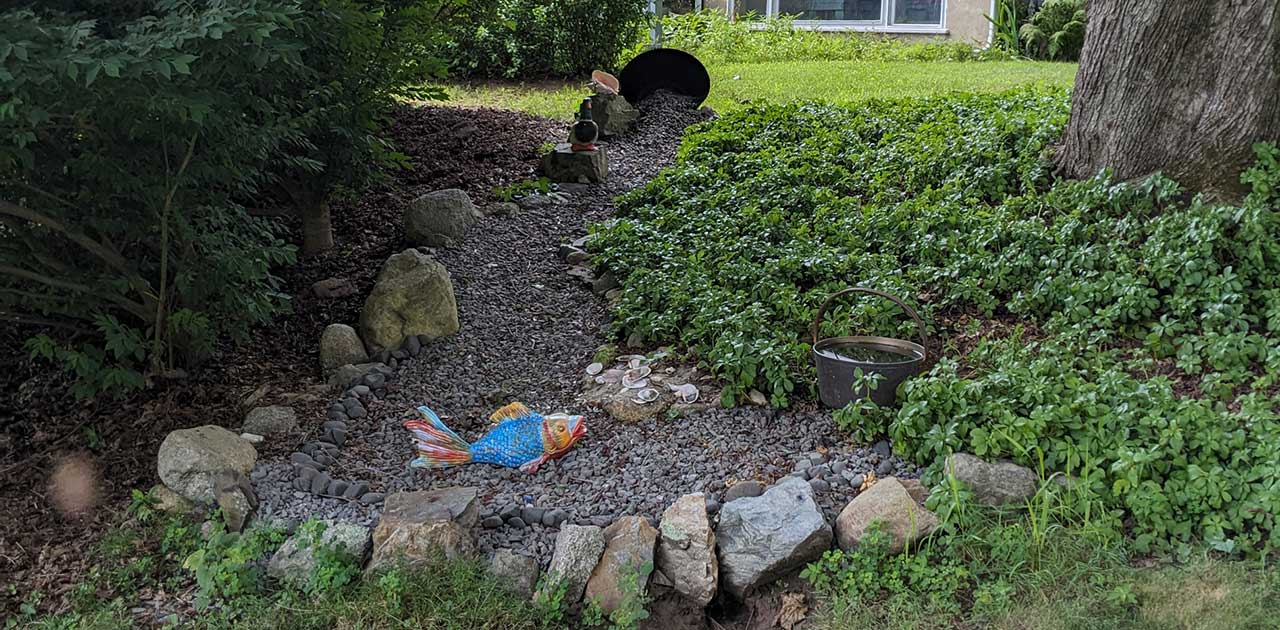
If your property has a section with a steep slope or a rapid change in grade you might have the perfect location for a rock garden. While I’ve seen some elaborate man made rock gardens and poolside grottos, to me the most impressive have been the ones that had the makings there in nature and the gardener just brought out the beauty and accentuated it.
Here’s how to build one, it’s simple
Making a rock garden is simple – just remember to start small, it can be a bigger job than it looks. Often with a slope there will be built-in rocks that have weathered and provide interest as well as anchor the soil in place and keep it from eroding in the rain. Starting with these, you need to clear away the filler dirt and expose as much of the rocks as you can. If there aren’t any rocks in place, start with the bottom of the slope and set the rocks in place resting at least two points of each rock on other rocks. The rocks themselves don’t have to be beautiful or expensive (using native granites looks most natural), but it does help to use one or two specimen rocks such as red quartz or Vermont marble, placing them strategically for visual impact. Also a rule of thumb is to use the biggest rocks at the bottom and work up to the smallest rocks at the top of the slope. This not only gives the garden a natural receding mass from bottom to top, but also helps to prevent hernia damage to the garden builder.
It takes a lot of rocks

Once you’ve got the rocks in place in what you feel is an aesthetically pleasing arrangement spray the entire area with water and watch where the water goes. If you have any streams that form and look like they’ll erode the soil quickly, pack that area with smaller stones before you add any topsoil. Repeat this spraying and observing until you are satisfied that nature will not be inclined to wash away your handiwork. If you have stubborn areas where the smaller rocks just don’t stop the torrent you can bend up some old chicken wire and place it in the area with the small rocks to create a more sturdy blockage.
Take your time
The next step is to mix together some nice garden soil with some sand and some peat moss (equal parts 1/3 each) and pack the soil around the rocks. Water lightly and let the soil settle around the rocks for about a week. While you’re waiting it’s advisable to look at the garden from a distance at different times of the day to make sure that you like the layout before you add the plants.
Some plants that I like
Rock gardens should be populated with plants that one would naturally find growing among the rocks in nature. Because there is a tremendous variety of plants to choose from, this can be accomplished very easily. Starting with the front edges, plant some low growing perennials around the edges of the rocks. My favorites are phlox (white, purple and pink) as they bloom in the early spring and provide an interesting green texture for the rest of the year. They will also creep along the rocks and fall over the edges like a waterfall, a very nice feature. Mixed among them I like to place some summer bloomers – heaths, heathers, lavender, portulaca, alyssum, dianthus, strawflowers, yellow buttons, zinnias, and marigolds. While you’re at it you can find some field mosses and lichens and transplant them to live in indentations on the rocks that look natural.
Care and Treatment
Rock gardens require a special care and treatment as the soil can compact and dry out easily and the plants will suffer. Start with a heavy layer of mulch over all soil sections, pulling it back from your flower stems a bit. You should also loosen the soil with a pitchfork every spring to keep the soil from compacting. And last, you should cut back the foliage and stems of plants when they’re gone by and when they get too leggy for your design. Garden pests should be watched for and removed immediately. You’ll find that slugs especially love the shelter they find among the rocks. Also if you have chipmunks you’ll find that they’re immediately interested in your stonework and will be sure to dig up your favorite plants, so watch where they go and plant those plants far away. As part of annual garden work, before winter’s first freeze you should mulch the bed heavily the first couple of years until your plants have taken and are accustomed to their new wonderful environment.
If you got value from this article, please share it with your network (e.g., Facebook, Twitter, LinkedIn)
80% of my business comes from referrals and repeat customers.
Please feel free to forward my profile to others you feel would benefit from my services

